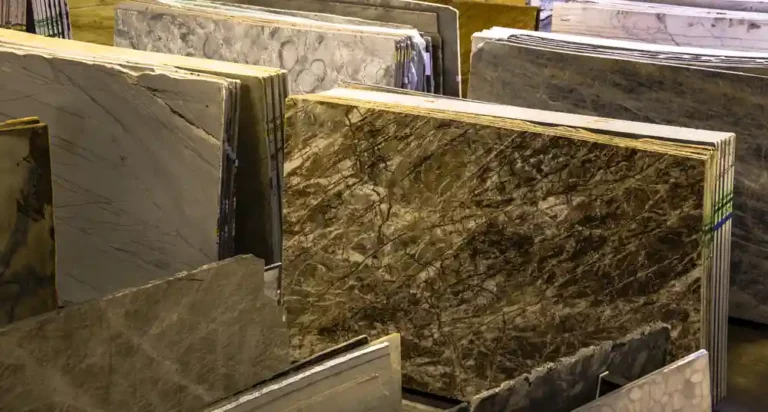How to Remove Granite Countertops | A Step-by-Step Guide
Removing granite countertops requires careful consideration due to their weight and durability. Granite is popular for its beauty and longevity, but replacing granite countertops demands the right techniques to avoid damage and ensure safety.
Unlike lighter materials, granite countertops pose challenges in handling and disposal. Specialized tools and expertise are essential for this task. When it’s time to replace granite countertops, proper removal methods are crucial to prevent structural damage.
Employing professionals for removing granite countertops ensures a smooth and safe process, maintaining the integrity of your kitchen or bathroom. In this article, we will discuss in detail how to remove granite countertops.
Preparation

Tools
Before starting the removal process, gather the necessary tools and equipment:
- Safety goggles and gloves
- Heavy-duty lifting straps or suction cups
- Pry bars or crowbars
- Adjustable wrench
- Utility knife
- Screwdriver
- Hammer
- Bucket for
- storing screws and other hardware
- Soft padding or blankets to protect the floor and cabinets
- Furniture dollies or carts for transportation
Safety Precautions
- Wear appropriate safety gear such as goggles and gloves to protect against injuries from sharp edges and falling debris.
- Use proper lifting techniques or lifting aids like straps or suction cups to prevent back strains or other injuries.
- Clear the surrounding area of any obstacles to provide ample space for maneuvering during the removal process.
- Ensure the electricity and water supply to the countertop area are turned off to avoid accidents.
- Communicate effectively with any assistants or team members involved in the removal process to ensure coordination and safety.
Removing Granite Countertops Without Damaging Cabinets
Assessing the Attachment Method
Before beginning the removal process, it’s essential to understand how the granite countertops are attached to the cabinets. The attachment method can vary depending on the installation technique used by the installer. Common attachment methods include adhesive, screws, or a combination of both.
To assess the attachment method
- Inspect the underside of the countertop to identify any visible screws or hold down brackets.
- If screws are present, determine the locations and types of screws used (e.g., wood screws, machine screws).
- Examine the perimeter of the countertop to look for traces of adhesive or caulking.
Loosening the Adhesive or Screws
Once the attachment method is determined, the next step is to loosen the adhesive or screws securing the granite slab to the cabinets.
For adhesive
- Use a heat gun or hairdryer to gently warm the adhesive along the seam between the countertop and cabinets.
- Insert a putty knife or a flat pry bar into the seam and carefully apply pressure to separate the granite from the cabinets.
- Work slowly and methodically around the perimeter of the countertop to gradually loosen the adhesive without causing damage to the cabinets.
For screws
- Use a screwdriver or drill with the appropriate bit to remove any visible screws securing the countertop to the cabinets.
- Keep track of the screws as they are removed to ensure they can be reused during reinstallation if necessary.
- If screws are difficult to access, use a flashlight and mirror to locate and reach them.
Carefully Lifting the Granite Slab
Once the adhesive or screws are loosened, it’s time to lift the granite slab from the cabinets. This step requires caution to prevent any damage to the countertop or cabinets.
To lift the granite slab
- Enlist the help of at least two strong individuals to assist with lifting the heavy countertop.
- Place wooden shims or wedges between the countertop and cabinets to provide support and prevent sudden movements.
- Lift the countertop evenly and slowly to avoid any sudden shifts or tilting.
- Use caution around any plumbing fixtures or appliances that may be attached to the countertop.
Protecting the Cabinets During Removal
Throughout the removal process, it’s crucial to take steps to protect the cabinets from damage.
To protect the cabinets
- Place cardboard or soft padding on the cabinet surfaces beneath the countertop to prevent scratches or dents.
- Use caution when prying or lifting the countertop to avoid accidentally damaging the cabinet surfaces.
- Inspect the cabinets for any signs of stress or damage during the removal process and make any necessary repairs before reinstalling the countertop.
How to Remove Granite Countertops That Are Glued Down

Removing granite countertops that are glued down requires careful steps to avoid damaging the countertop or the cabinets underneath. Here’s a step-by-step guide:
Understanding the adhesive used
Identify the type of adhesive used to secure the granite countertop. Common adhesives include epoxy or construction adhesive.
Heating the adhesive to soften it
Use a heat gun or hairdryer to apply heat to the seams between the granite countertop and the cabinets. Heat helps to soften the adhesive, making it easier to remove the countertop.
Using a pry bar or putty knife to separate the countertop
Once the adhesive is softened, gently insert a pry bar or putty knife between the granite countertop and the cabinets. Carefully work around the edges to loosen the adhesive bond without damaging the countertop or cabinets.
Slowly lifting and removing the granite slab
With the adhesive loosened, carefully lift one corner of the granite slab using the pry bar. Gradually lift and remove the entire slab, ensuring it doesn’t crack or break during the process. Have assistance if the countertop is large and heavy.
Cleaning up and preparing for disposal or reuse
Clean any remaining adhesive residue from both the countertop and the cabinets using a solvent recommended for the type of adhesive used. Dispose of the old countertop responsibly or consider repurposing it if it’s in good condition.
Steps After Removing Granite Countertops
Cleaning the countertop and cabinets
Once the countertop is removed, clean the area thoroughly to remove any dust, debris, or adhesive residue left behind. This ensures a clean surface for the next steps.
Repairing any damage
Assess the condition of the cabinets and the surrounding area where the countertop was installed. Repair any damage to the cabinets or the wall caused during the removal process. This might involve patching holes, fixing scratches, or any other necessary repairs.
Disposing of the old countertop responsibly
Granite countertops are heavy and can be difficult to dispose of properly. Consider recycling options if possible, as granite can be reused or repurposed. If recycling is not feasible, contact your local waste management facility to inquire about proper disposal methods. Some areas have specific regulations regarding the disposal of construction materials like granite, so be sure to follow local guidelines.
Conclusion
Removing granite countertops requires careful planning and execution to avoid damage to the surrounding area and the countertop itself. Begin by clearing off the countertop and disconnecting any plumbing fixtures attached to it. Next, use a pry bar or similar tool to gently lift the granite slab away from the cabinets or support structure beneath it.
It’s crucial to proceed with caution, as granite countertops can be heavy and brittle. Feel free to contact us for any type of services or query related to how to remove granite countertops.
FAQs
How Do I Prepare To Remove Granite Countertops?
Start by clearing off the countertop and disconnecting any plumbing fixtures attached to it.
What Tools Do I Need To Remove Granite Countertops?
You’ll need a pry bar or similar tool to gently lift the granite slab, as well as protective gear like gloves and safety goggles.
Can I Remove Granite Countertops Alone?
It’s recommended to have assistance due to the weight and potential fragility of granite countertops.
How Do I Prevent Damage To The Surrounding Area During Removal?
Take precautions to protect the floor and cabinets from scratches or dents by using padding or coverings.
What Should I Do With The Granite Countertop Once It’s Removed?
Consider recycling options if feasible, or arrange for proper disposal according to local regulations.
How Do I Clean Up Adhesive Residue After Removing The Granite Countertop?
Use an adhesive remover or solvent to dissolve any leftover adhesive, following manufacturer instructions carefully.
